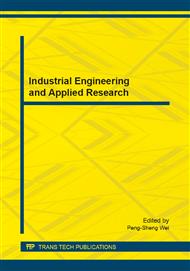p.44
p.48
p.55
p.60
p.65
p.69
p.75
p.80
p.84
3-D Model Reconstruction and Mold Flow Simulation for an Existing Shaped Part
Abstract:
This study presents a 3-D model reconstruction method using a multiple coordinate measurement machine that includes a touch-trigger probe and image detection. Control points of the feature curves of an existing shaped part and geometric data of engineering features are first measured, and then the 3-D model is reconstructed in forward design procedure by the common CAD software ‘Pro/E’. This study also develops finite element models based on the 3-D model built to conduct mold flow simulations by the simulating system ‘Moldflow’. A joystick with two cases was adopted as the illustrated case. Final, actual rapid prototyping (RP) models were fabricated for model examination.
Info:
Periodical:
Pages:
65-68
Citation:
Online since:
August 2014
Authors:
Price:
Сopyright:
© 2014 Trans Tech Publications Ltd. All Rights Reserved
Share:
Citation:


